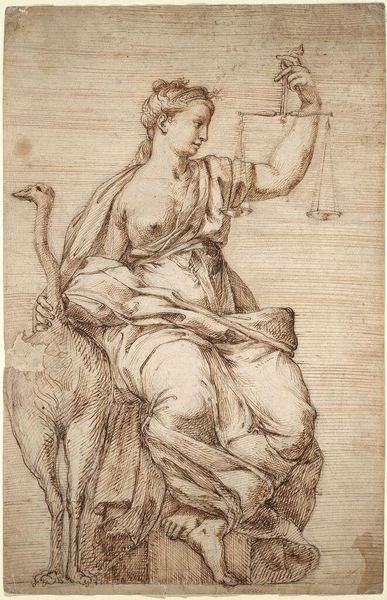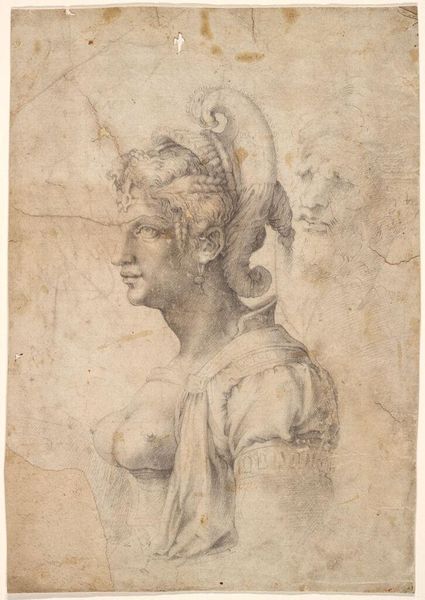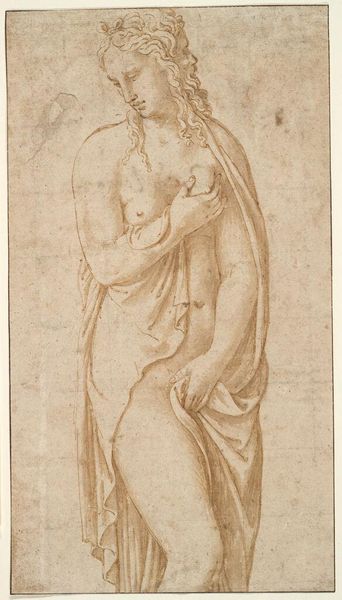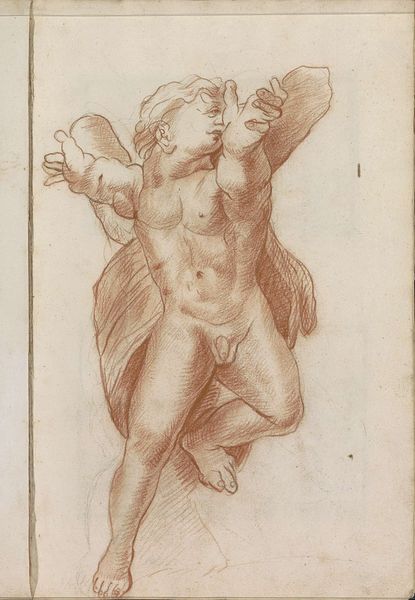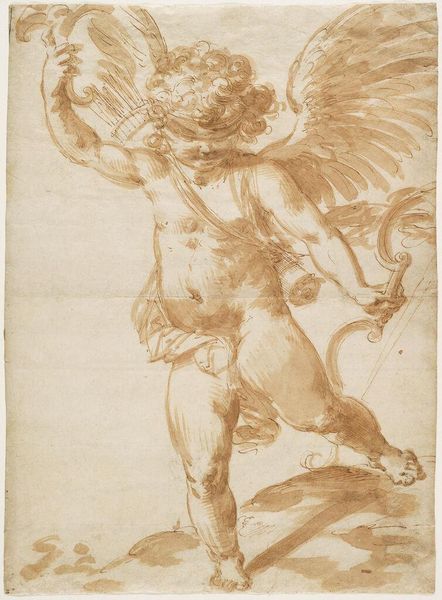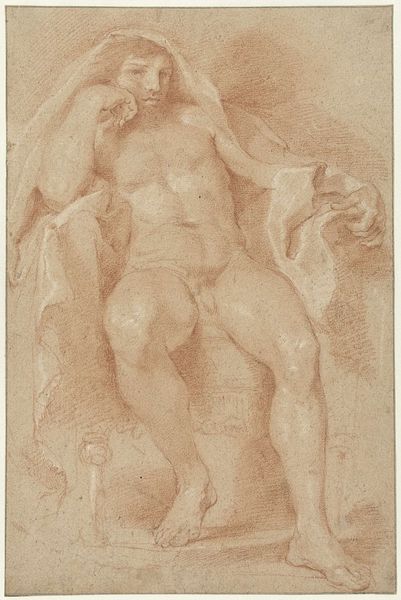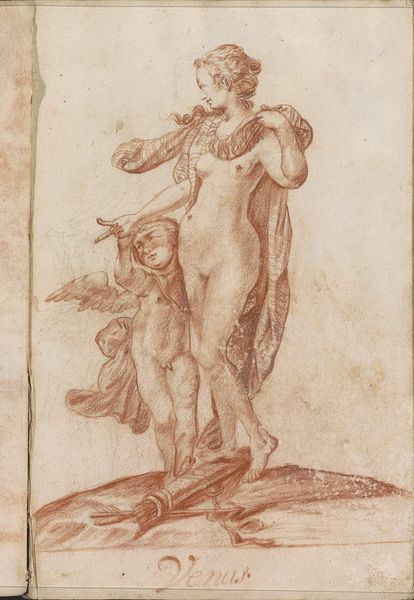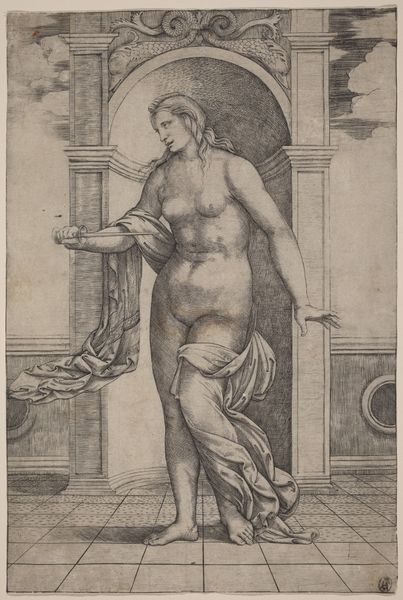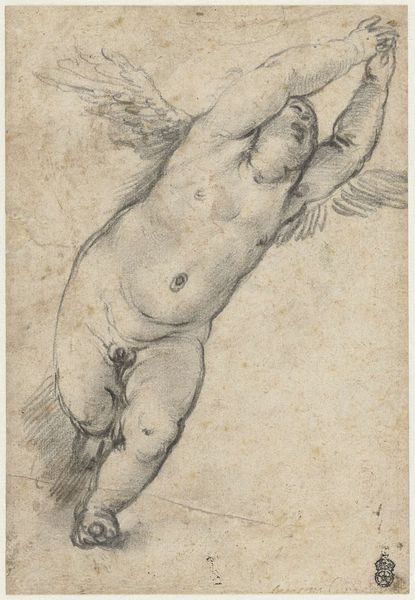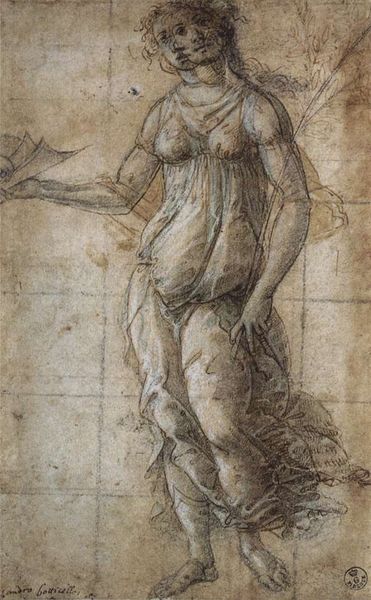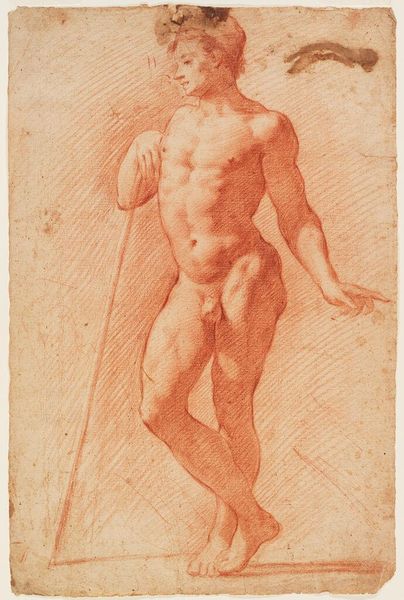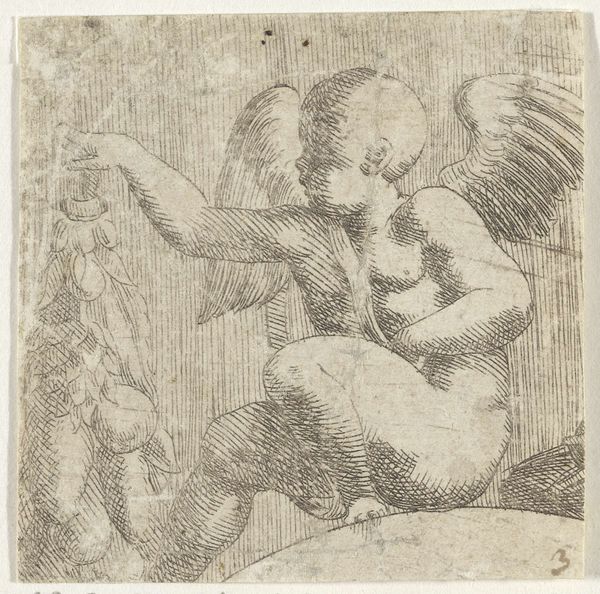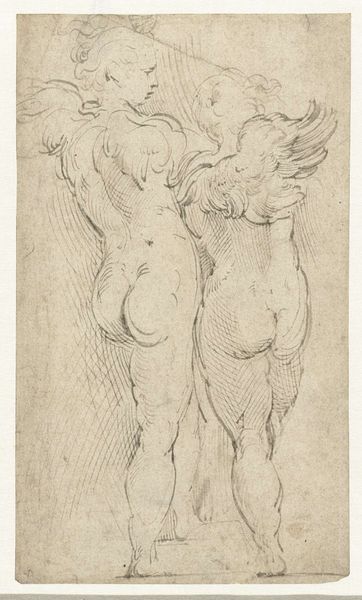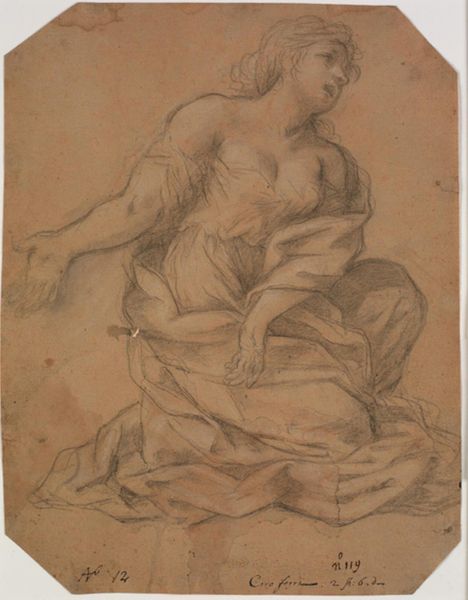
Sphinx c. 16th century
Dimensions: 16.9 Ã 12 cm (6 5/8 Ã 4 3/4 in.)
Copyright: CC0 1.0
Curator: This drawing by Perino del Vaga, simply titled 'Sphinx', dates back to the 16th century. The sepia tones give it a really immediate and classical feel, don’t you think? Editor: It feels charged with a particular tension. A female figure, yet rendered as a hybrid—a monster. What power dynamics are at play when we view her? Curator: Right, it pulls at our contemporary understanding of mythology and gender. It invites us to analyze how feminine agency is often mediated through monstrous forms. Editor: And thinking about the Renaissance context, what was the sphinx's symbolic role during that period? Was it purely decorative, or did it hold a deeper political significance? Curator: These sphinxes often decorated tombs and palaces, and they were a common symbol of wisdom and guardianship, but in the Renaissance, sphinxes also became associated with secrets and enigmas, the feminine divine. Editor: Seeing this work now, it certainly makes me question our ongoing construction of beauty and power, doesn't it? Curator: Absolutely, and it reminds me that we need to continuously interrogate the historical narratives we inherit.
Comments
No comments
Be the first to comment and join the conversation on the ultimate creative platform.
